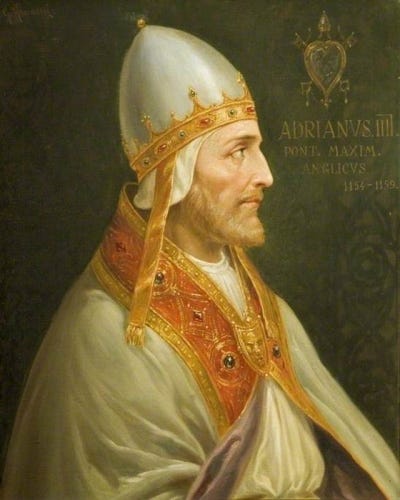A teaser of what's coming...
You've all been super patient. Here's a little taste of what you'll be getting daily from Today in Papal History!
It’s Friday, December 4.
We’re still compiling everything for the big launch of this daily newsletter, but to start the excitement for all you early subscribers a little early, here’s a little bit of what happened Today in Papal History.
1154 AD
Nicholas Breakspear, a man of humble birth who spent much of his life as a monk in Britain before being recognized and elevated through the ranks by Blessed Pope Eugene III, was elected the 169th pope of the Roman Catholic Church. He chose the name Adrian IV, and is still the only Englishman in history to be elected as Bishop of Rome.
Hear his full story on the Popecast episode The Pope Who Canceled Rome.
1987 AD
Pope St. John Paul II released an Apostolic Letter entitled Duodecimum Saeculum (“The Twelfth Centenary…”), written to the Catholic bishops of the world on the 1200th Anniversary of the Second Council of Nicaea, which condemned iconoclasm, the heresy that forbid the use of religious imagery and statuary for help with one’s spiritual life.
Here’s a snippet from that letter, speaking about the need for good Christian art, especially in our time:
Faith is the necessary inspiration of Church art.
Art for art's sake, which only refers to the author, without establishing a relationship with the divine world, does not have its place in the Christian concept of the icon. No matter what style is adopted, all sacred art must express the faith and hope of the Church. The tradition of the icon shows that the artist must be conscious of fulfilling a mission of service to the Church.
Authentic Christian art is that which, through sensible perception, gives the intuition that the Lord is present in his Church, that the events of salvation history give meaning and orientation to our life, that the glory that is promised us already transforms our existence. Sacred art must tend to offer us a visual synthesis of all dimensions of our faith. Church art must aim at speaking the language of the Incarnation and, with the elements of matter, express the One who "deigned to dwell in matter and bring about our salvation through matter”




